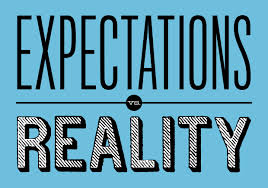Setting expectations for employees is one of the most important tasks for a manager. Without clear expectations you can’t evaluate employees and also they will not know what is expected of them and how do they do in their job.
Expectations must be clear and well communicated. Ideally they are in written form so there is no misunderstanding. The more specific the better.
Setting Expectations For Newhires
When we have a new-hire in any of our companies our expectations are very simple.
First, do what you’re told to do.
Then, do what you’re told to do but tell us what you think.
After that, do what you think is the best to get your job done.
Each phase is 1 week to 1 month duration depending on complexity of the position and capability of a person.
Phase one shows us that person works hard and gets job done.
It is also opportunity for new-hire to get to know how things work around here.
Later on we would like to hear what this person has to say and see the quality of their thinking.
Whatever good idea will come up, it tends to be informed and based on experience from phase 1. Most of the ideas we implement.
Not everyone will make it to phase 3. For those who do, this is a chance to work independently, become a business owner within our business and do things their way.
Always make sure, if you implement this approach not to skip any of the phases.
As I wrote here, making exceptions doesn’t pay out.
Setting Expectations For Employees
One of the key things for high performance and high satisfaction of employees is that they know what is expected of them. If they don’t know they feel lost and are missing clear feedback on how they are doing.
We measure i) behavioural and ii) performance expectations. First are focused on desired behaviours. They are based on our company’s values. Performance expectations are focused on results.
Here is the example of what we measure as part of “behavioural” expectations. This is done 4 times a year. Employee does his/her own rating, then manager does his/her own than we compare and discuss. Scale is as follows: 1) consistently exceeds expectations 2) sometimes exceeds 3) meets expectations 4) sometimes doesn’t meet and 5) often doesn’t meet expectations.
Example:
i) His/Her attitude is focused on solutions, not problems ii) He/She honestly offers help and can ask for help if needed iii) He/She does the extra step to deliver
Overall, we measure 11 points. All written, clearly communicated and reviewed 4 times a year. Always have specific examples to support your evaluation.
On performance it is much easier as there you are tracking and evaluation numbers. Always keep in mind that you will get what you measure, so you need to be very careful what expectations you will set.
Related posts: Three kinds of dogs; Hiring and Firing Part I; Hiring and Firing Part II





Pingback: How To Make Your People Think | marcelway.com